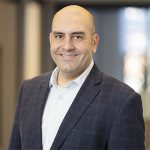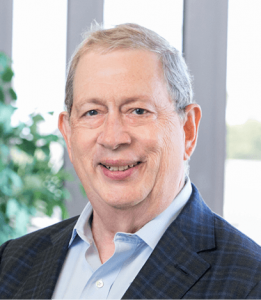The Glory of John Martin: an Understated Leader Who Built a Biotech Powerhouse

Chris Garabedian, chairman and CEO, Xontogeny
John C. Martin was an unassuming man with an ordinary name. But his leadership qualities and accomplishments as a biopharma CEO were extraordinary.
Martin, the CEO of Foster City, Calif.-based Gilead Sciences from 1996 to 2016, didn’t seek to dominate the room or inspire legions with a charismatic personality. He didn’t make the cover of magazines, even when he led the company that did more than any other to transform HIV into a chronic, manageable disease.
When he died last week at age 70, Martin was essentially unknown to the public and not very well understood within his own industry. Yet he left a legacy of having built one of biotech’s most successful and enduring companies.
I’m fortunate to have seen Martin work at close range, and consider him a mentor. When I was serving in several roles as part of a lean and aspirational management team at Gilead in the late 1990s and early 2000s, Martin was the boss. I got to see how he set direction and how the organization responded. Long after I moved on, I saw how this quiet leader continued to envision and execute on the big, long-term strategies that he set in motion in Gilead’s adolescent years.

John C. Martin, former chairman and CEO, Gilead Sciences
Humble Appearances
John did not dress to impress, only donning a conservative suit and tie when it was necessary as a respectful obligation for an important meeting or an investment conference. His business casual attire of neutral colors and pattern-less sport coats seemed intended to not allow any distraction from his words and the ideas he wanted to convey.
He didn’t focus on selling a future vision of Gilead. He was more likely to be touting the latest approved drug or the importance of a recent company initiative. John didn’t try to persuade with a dynamic or stylized narrative, but rather by clearly communicating a core idea in the simplest and most straight-forward manner possible, often with just a short statement or a Socratic question.
He was a leader who listened and observed far more than he spoke. When he spoke, he did it with piercing intent.
When John asked you a question in a meeting, it sometimes felt like a test. John likely already knew the answer or had a better answer than what you might muster up. John could make one comment or a short statement in a meeting and change the entire trajectory of the conversation.
He displayed an efficiency of words that was focused on communicating with clarity about a key concept or an action to be taken. At the end of a meeting with John, there was little room for interpretation or doubt about what to do next.
He was uninterested in the spotlight. He let other executives do the talking for Gilead. He never sought awards. He let the company’s results speak volumes.
These performance metrics led Harvard Business Review in 2010 to rank Martin #6 in their first edition of “Best Performing CEOs in the World” (Steve Jobs was #1). A few years later, Martin moved up to #2 behind Amazon’s Jeff Bezos.
During John’s tenure, Gilead went from a company valued in the hundreds of millions to one of the few biotech companies to achieve a $100 billion-plus valuation. Today, it’s the second highest-valued biopharma company ranking behind only Amgen.
During my tenure at Gilead (1997-2005), Martin’s office was austere. He worked at a simple uncluttered desk. Framed group photos highlighting Gilead’s history decorated the walls. A few sample bottles of Gilead’s approved products sat on the windowsill. There was a small conference table where I remember weekly tactical meetings would be held with selected members of the management team to go through John’s questions and tasks that he would accumulate over the week and would write down as a to-do list on a yellow legal pad.
If John was not in team meetings or walking around the corporate campus dropping in people’s offices, he was often at his desk tapping away at his laptop.
I saw his routines out of the corner of my eye. My office was two doors down from John and next door to the “other John,” John F. Milligan – the longtime chief operating officer and eventual CEO of Gilead. Early employees, to make sure they didn’t confuse one for the other, sometimes referred, with brevity, to ‘JCM’ and ‘JFM.’
I was an early riser, often arriving at work between 6 am and 6:30 am. That meant I was often first in the office. Let me correct that: I was often second, because John was already there. If he wasn’t, it probably meant he was traveling.
I didn’t want to leave that office next to John, even for a promotion. When I was tasked with leading Gilead Medical Affairs, I was supposed to move to the R&D building where my new boss, Norbert Bischofberger, was located. I dragged my feet for a year, with the lame excuse that I was too busy to move my things to a new office.
A Tireless Work Ethic
John loved to work. One Saturday morning on the day of Gilead’s annual company picnic, a beach event at Half Moon Bay, I stopped by the office in Foster City first to get a little work done. I was surprised to see John in the office.
I tried to make some small talk, which was always a bit awkward. That wasn’t his forte.
“Are you excited to go to the company picnic?” I asked.
He shrugged.
“I’d rather be spending the day working, but I guess people are expecting me to be there,” he said.
John would later be seen at the picnic chatting with employees, watching others play volleyball and eating barbecue. But the small talk of those huddled around him inevitably turned, and as most casual conversations almost always did with John, to the excitement of the work.
Yes, we talked shop at the company picnic.
Never have I experienced anyone with the tireless work ethic and persistent drive as John. His dedication to the vision of Gilead and getting quality products to the patients that needed them was an inspiration to all of us who worked for him.
John started his career on the science side. He received a PhD in Organic Chemistry from University of Chicago. He then worked at Syntex and Bristol Myers as a medicinal chemist leading antiviral drug programs.
While at Syntex, he decided to strengthen his business understanding and pursued an MBA in Marketing from Golden Gate University. John’s understanding of business and marketing along with his grounding in antiviral chemistry proved to be a potent combination.
A Strategic Masterstroke
Martin came to work at Gilead in 1990, when it was a startup working on antisense oligonucleotide drug candidates. He was named CEO in 1996. One of the first things he did was drop the antisense oligonucleotide work. The delivery challenges and high cost of goods meant it would probably take 20 years for these therapies to pan out, he reasoned.
That decision to stop doing antisense work was just as important as his decision shortly thereafter to bet the company on antivirals.
While thinking through this strategic pivot, John saw that antiretroviral cocktail therapies were emerging as the most potent weapons yet in the AIDS epidemic. The multi-drug combinations had turned the disease into a manageable chronic condition.
But many of the drugs required multiple pills taken several times throughout the day. Some had to be taken with food, some without. Patients had a pill burden of more than 20 pills taken at multiple time points over the day. Simply scheduling a daily regimen was a burdensome task and made it difficult for patients to fully adhere to prescriptions needed to keep the virus in check.
John unified Gilead around the easy-to-understand vision of “one pill, once a day.” It became the north star for the company. With that vision in mind, Gilead acquired Triangle Pharmaceuticals to obtain a second “backbone” nucleoside analogue to combine with Gilead’s own tenofovir. Rounding out the plan, Gilead formed a collaboration with BMS for the third drug component, the NNRTI efavirenz, and later for another BMS drug, the protease inhibitor atazanavir.
With those pieces in place, Gilead was on its way to dominating the HIV marketplace. Gilead’s drugs worked against the virus. That was clear. But they won in the marketplace because they enriched patient quality of life and made it easier for patients to stick to the instructions on the prescribing label.
In the mid-90s, almost every pharmaceutical company was seeking a piece of the HIV therapeutics market. Competitors included GSK, BMS, Pfizer, Abbott, Roche, and Merck. But the little biotech from Foster City, California, over the course of a decade, reigned supreme as the world’s largest maker of HIV medicines.
John didn’t stop there. The next clear goal was to develop or find the best-in-class treatment for HCV (hepatitis C virus). Gilead toiled on this work for more than a decade before acquiring Pharmasset and finishing work on what became the dominant cure for HCV.
Pricing and access to medicines were perennial thorny issues at Gilead. The critics were relentless and vocal. John handled these issues with aplomb — working methodically behind the scenes. He saw to it that Gilead’s HIV drugs could be manufactured at cost by local manufacturers in developing countries. He pressed teams to develop a pre-exposure prophylaxis, or PrEP, strategy to prevent HIV in high-risk individuals.
He persisted in multiple attempts to diversify Gilead beyond its core antiviral franchises. Not all of these acquisitions were successful – cardiovascular disease and pulmonary hypertension were a couple of areas where Gilead struggled to gain traction.
In his last major act as CEO, Martin oversaw the acquisition of Kite Pharma and its CAR-T platform to strengthen the company’s oncology and cell therapy bona fides. It’s a bold bet on the future that will take years to pay off.
Focus on the Customer
Throughout, John emphasized that Gilead be outward-looking. This was exemplified during the development and commercialization of Gilead’s initial HIV and HBV drugs. John expected that the top researchers and clinicians would personally know the top managers at Gilead.
John set the example himself. Every month, he would visit clinicians, often with a Gilead sales rep. He used the opportunity to conduct his own market research to help the drive the company’s clinical development pipeline strategy, anticipate objections to product adoption or exploit opportunities to position Gilead’s products more favorably vis-à-vis our competitors.
My first few months at Gilead were spent traveling the world visiting every top expert HBV clinician to learn about the disease, the current state of treatment and what outcomes would be most meaningful. This was market intel we would use to shape clinical development strategy.
John hungered for this kind of market knowledge so much, that he wanted it woven into the company’s cultural fabric.
When I was asked to lead Medical Affairs a few months before the introduction of Gilead’s first HIV drug, tenofovir (Viread), John handed me a business card of a physician he had recently met in one of the largest HIV-treating practices in New York’s Greenwich Village.
Fly to New York the next weekend to meet him, John said. And don’t come back until the doctor agrees to join us as a medical science liaison, he added.
“How do I do that?” I blurted out.
John told me he had planted the seed and that I just needed to convince the doctor that he could impact more patient lives by helping to educate other clinicians on his experience and how they could treat their patients optimally using Gilead’s drugs.
That was the first of many MDs, PhDs and PharmDs that were hired to build credible relationships between Gilead and the medical community.
This close working relationship extended beyond researchers and clinicians to the patient community. While almost every rare disease company knows the power of engaging with patient advocates, John was doing it with many HIV advocates in a thoughtful, sensitive and collaborative manner long before it was vogue. We discussed access, pricing, and feedback on marketing messages.
I took many of these principles with me in meetings with Duchenne Muscular Dystrophy patients and advocates when I later became CEO of Sarepta Therapeutics.
A Man of Ideas
John Martin didn’t feel compelled to show everyone how smart he was, but he had a fierce intellect. He was a man of ideas. It seemed as if his mind never stopped working and he was always 10 steps ahead of everyone else. He read philosophy with practical aims in mind.
A few days after a meeting on organizational effectiveness, John gave me a copy of Nietzsche’s “Beyond Good and Evil.” He explained the dynamics of managers and subordinates and how those in authority are often perceived wrongly in terms of ethics and intention by those who work for them.
A couple weeks later, I gave him Hobbes’ “Leviathan.” We discussed how to best tame a growing organization and keep it from getting unwieldy and unmanageable. Every discussion of ideas was anchored in application to our day-to-day work.
There is a long list of Gilead alumni and current employees, like me, who would call John their most influential mentor. While some of us left Gilead prior to John’s departure at the end of 2018 (I left in 2005), there was quite an exodus in recent years of senior leaders who spent the bulk of their careers at Gilead and have now moved on to be CEOs and board members for other companies. They are carrying forward John’s legacy.
John never sought glory, but was glorified by so many of us who knew him and had the pleasure of working with him. Glory is defined in numerous ways but the word most commonly means “high renown or honor won by notable achievements” and “magnificence or great beauty,” as well as “praise, worship and thanksgiving offered to a deity.”
As I read about his death last week, I realized that his understated and humble style did not allow him to receive the glory that he deserved from the industry that benefited so much from his contributions. But he has provided a tremendous legacy for those that learned from him and a beautiful standard for us to strive toward, to measure ourselves against, and to carry forward.




